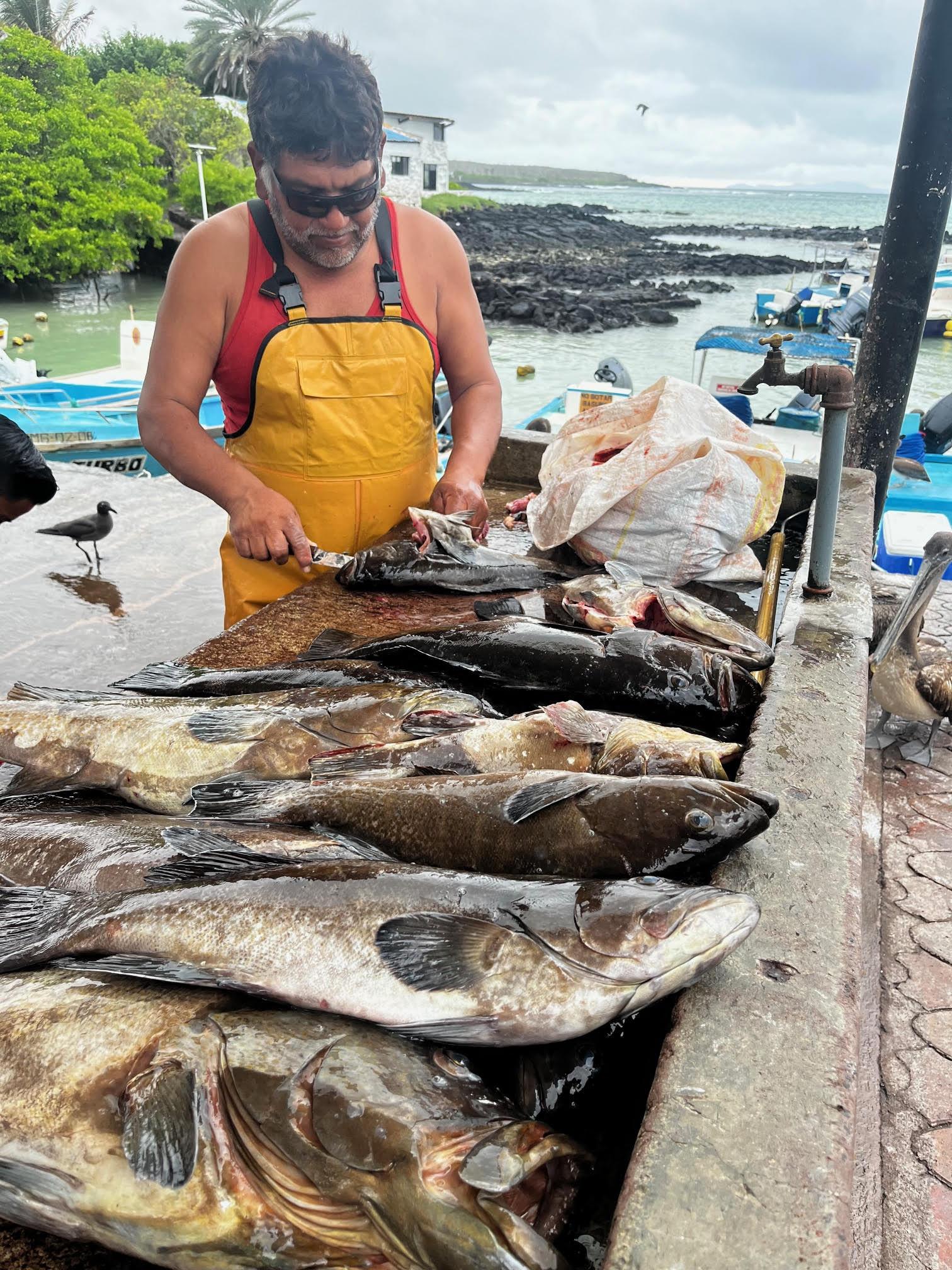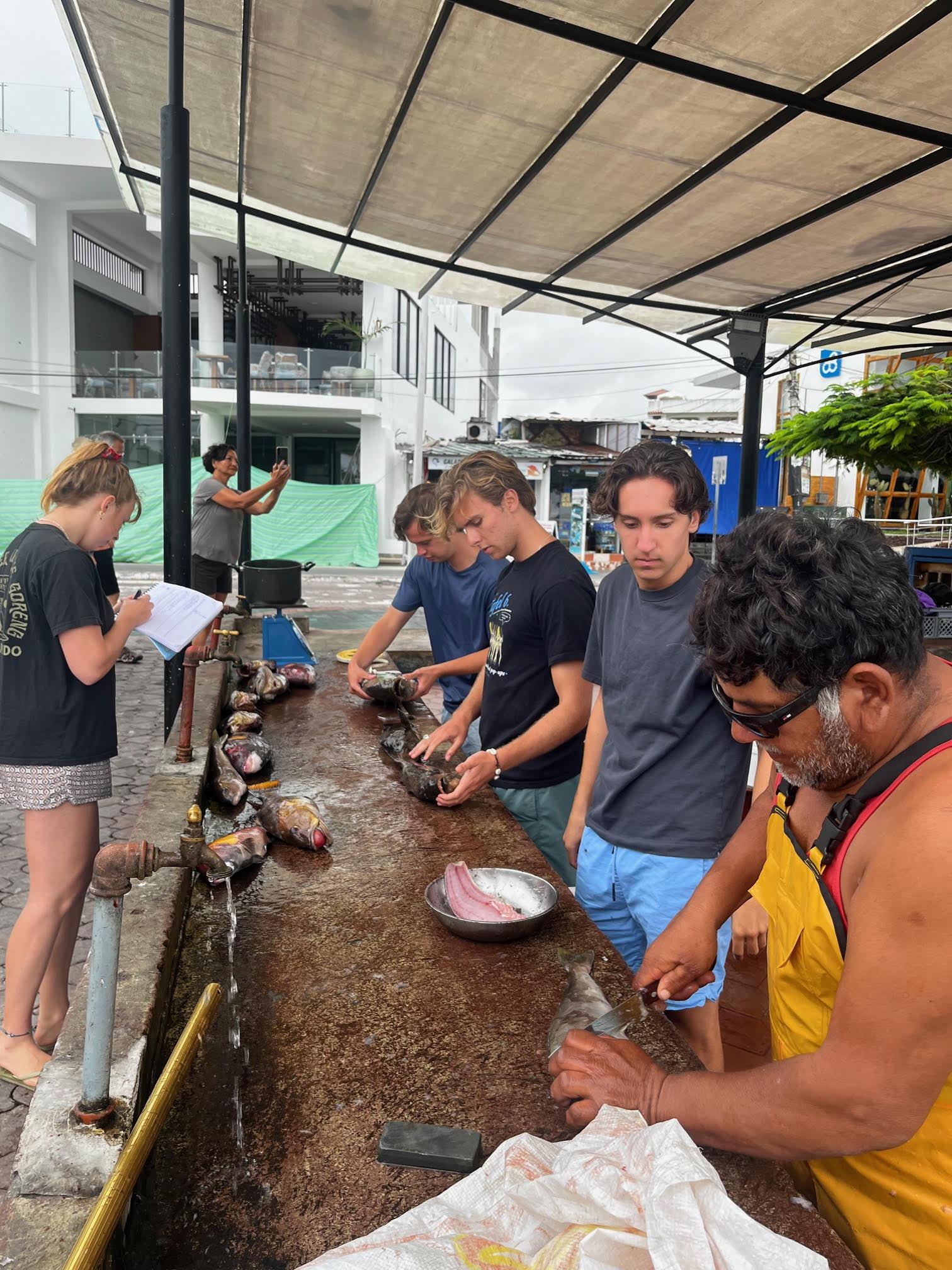A new project aims to transform fish waste into business opportunities in the Galápagos Islands. It is as part of a broader initiative encouraging the creation of "Circular Communities". A circular community maximizes resource efficiency, reduces waste, and promotes sustainability.
In a circular community, the life cycle of products is extended through regenerative practices, reuse, repair, renovation, and recycling. The goal is to create a closed system where materials and resources remain in use for as long as possible, extracting maximum value from them while in use, and then recovering and regenerating products and materials at the end of each service life cycle. This new research project aims to enhance the sustainability of the Santa Cruz Island seafood system through initiatives promoting a circular economy.

Partners and project
The project is a collaboration of: the University of the Americas of Ecuador (UDLA), the Delft Centre of Entrepreneurship (DCE) of the Delft University of Technology (TU Delft), the Circular Community Foundation, The Institute for Housing and Urban Development Studies (IHS) of Erasmus University Rotterdam, The Institute of Biology of Leiden University, and the Pelican Bay Fishing Cooperative of Galápagos Islands.
Within the framework of this project workshops, interviews, and information gathering on fish waste in Santa Cruz Island were conducted. Various stakeholders participated in the workshops and interviews, such as the Pelican Bay Fishing Cooperative, restaurant owners, chefs, fishers, farmers, municipal authorities, the Government Council of the Galápagos Special Regime, the Ministry of Production, and the Autonomous Government of Santa Cruz Island and others.
The workshops were designed using the 'Circular Value Flower', a methodology developed by Dutch experts to create circular communities through practical and sustainable strategies," mentioned Dr. Fátima Delgado, a representative of TU Delft. The results will be used to formulate alternative research and development projects, obtaining the necessary funding to initiate the implementation of the action plan agreed upon at the end of the workshops. The intention is to promote circular economy initiatives that contribute to improving the Santa Cruz Island seafood system, generating economic and environmental benefits.

Challenges of the seafood system
The Galápagos seafood system faces various environmental and anthropogenic challenges that jeopardize the food security, economy, nutrition, and health of the archipelago's inhabitants. If not managed properly, fish waste can contaminate water and soil, facilitate the proliferation of invasive species, or disrupt local fauna. Additionally, the decomposition of organic matter can produce unpleasant odors and harmful gasses, affecting the quality of life and well-being of local communities, as well as the tourism potential of the archipelago. Fish waste remains a lost economic opportunity to reuse all the raw materials that fish offer, which can be transformed into value-added products such as dietary supplements, leather goods, fertilizer, and organic plastic, among others, creating new income and employment sources for coastal communities.
Solutions
Circular economy represents a solution by transforming fish waste and other wasted organic matter (waste from cows and pigs) into marketable products. “This would create economic incentives to implement a more efficient and responsible environmental management system, contributing to creating a circular community that is resilient and self-sufficient," stated researcher Mauricio Castrejón, UDLA representative in the Galápagos.
The circular economy project is executed by Pelicano Bay Cooperative with technical and scientific assistance from UDLA and TU Delft. It represents progress towards finding practical and sustainable solutions to the challenges faced by the Galápagos Islands seafood system. Collaboration between fishermen, academia, chefs, and entrepreneurs is essential to ensure the success and sustainability of such innovative initiatives," added Dr. Angela Díaz, innovation specialist at UDLA.
Methodology: Circular Value Flower
The Circular Value Flower - used in this project - is a methodology that helps coordinate the collective closure of resource cycles (biological and technological materials, energy, water, and nutrients) at the community level, providing information on the added value (social, ecological, aesthetic, cultural, and economic) that can be achieved within the collectively built circular environment.
Dr. Els Leclercq, creator of the methodology and researcher at the Circular Community Foundation: “The Circular Value Flower is used to analyze circular initiatives in communities. Its goal is to contribute to the creation of Circular Communities, pioneering initiatives that collectively seek to close product life cycles at the neighborhood or community level."
Read more about the Circular Value Flower
More information about the project:
Dr. Fátima Delgado
Sustainable & Circular Entrepreneurship - Specialist & Lecturer
Decolonizing Sustainability – Lecturer
TU Delft l Centre for Entrepreneurship
f.delgadomedina@tudelft.nl
